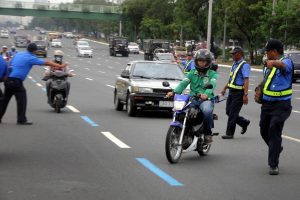Philippines: One of Southeast Asia’s Top Destinations
The Philippines is known for its supreme hospitality and family-based culture. No wonder why many foreign nationals choose the country to bring families, build relationships, and explore its magnificent travel destinations year-wide.
The country has a lot to offer: inviting blue seas and colorful sea creatures; verdant valleys and towering trees; graffiti-printed jeepneys and peculiar tricycles; vast rice fields and corn plantations; long, vibrant festivities; and genuine, happy-go-lucky people. These are the enchanting qualities of the country that keep tourists coming back.
While unique tourist attractions are the country’s secret to its booming tourism count, its worsening traffic condition in the megacities and the high rates of road accidents is also prevalent. In 2015 alone, the Philippine Statistics Authority (PSA) recorded a total of 10,012 people who were killed in road crash-related accidents involving people in the working age group between 18-64 years old. With this frightening number, the Philippine government took some steps to reduce the road accidents cases. One of the latest (and heavily discussed) laws currently enforced to address this is the Republic Act 10913 or better known as Anti-Distracted Driving Act (ADDA).
Many got confused on the guidelines of this law. In order not to get “distracted”, let’s get some facts straight. Here are some tips tourists, expats, and even locals need to know to have that uninterrupted, hassle-free stay in the country:
Coverage and Applicability of the Law
Anti-Distracted Driving Act (ADDA) strictly prohibits a person (the driver) from holding and using mobile communication devices and electronic entertainment gadgets when driving a motor vehicle, regardless when it is in motion or temporarily stopped on a traffic light or intersection. This is really the essence of this law: to keep drivers’ 100% focus on the road.
ADDA applies to both public and private vehicles including wheeled agricultural machineries, construction equipment, and other forms of conveyances such as bicycles, pedicabs, trolleys, “habal-habal”, “kuligligs”, wagons, carriages, and carts that may either be human-powered or pulled by an animal as long as the same are operated or driven in public thoroughfares, highways or streets.
Specific Prohibitions
While you are behind the wheel of your vehicle on a publicly accessed and busy road, holding and using your cellular phone, even if you’re struck in a heavy traffic is again absolutely a big no-no. Other various acts which are considered illegal under this law are the following activities:
- Making or receiving calls;
- Sending or reading text-based communications;
- Composing messages or e-mails;
- Browsing the internet;
- Playing games;
- Watching movies;
- Reading e-books;
- Performing calculations;
- Others not mentioned but are considerably a form of “distracted driving” according to the law.
If you are compelled to do any of this, pull off to the side of the road or stay in the nearest café to perform an urgent task. If it can wait, hang on for a little while until you arrive at your destination. Prevention is better than cure, right?
Who can be Exempted and When
As the cliché goes, there is always an exemption of the law which is indeed true for ADDA. The exemption applies to motorists who are responding to emergency situations such as accident, bomb or terrorist threat, fire or explosion, crime, other instances needing immediate medical attention (such as a doctor on his phone while on the way to the hospital to monitor his patient who is in a critical condition), or when an individual’s safety and security is compromised. Take note that these exemptions are only allowed to certain scenarios and should not be abused by anyone.
Devices Allowed
- Cellular phones used as GPS device is allowed provided that it should be positioned or mounted below, at the same level, or on-top of the dashboard, and even on the windshield, as long as the highest point of the device is not higher than four inches from the dashboard and out of the driver’s line of sight.
- Installed navigational apps of the vehicle are also allowed to be used provided that it must be set before the travel starts. When looking for alternate routes, the driver is advised to pull the vehicle aside and re-set navigation.
- Dashcams are allowed because it is still not covered by ADDA and currently, there are still no approved legislations regulating its use in the country. However, it is encouraged that vehicle owners place it at the back of the rearview mirror for it not to be a distraction to the driver.
- Hands-free function of cellular phones and other mobile communication devices are also allowed to be used when the driver makes or receives calls. But if the driver uses it for entertainment purposes such as listening to music or radio, then it is prohibited by the law.
- Accessories mounted on the dashboard such as toys, crucifix, rosaries, figurines and stickers are not covered by ADDA but these are discouraged to be placed on the dashboard as these affects the line of sight of the driver.
- Other “distracting” activities such as drinking coffee and putting make-up are also not covered by ADDA but are seriously discouraged.
Authorized Apprehending Officers
Only persons from the Land Transportation Office (LTO) under Department of Transportation, Highway Patrol Group (HPG) under Philippine National Police, Metro Manila Development Authority (MMDA) and Local Government Units (LGU) are authorized to apprehend violators.
These persons are required to wear their uniform and present their identification cards when flagging down traffic violators. Therefore, if you will be apprehended by someone not in uniform and who can’t present his or her ID, then you are not required to present your driver’s license or passport to them. Call the nearest police station for assistance instead.
How about heavily tinted vehicles?
Despite feeling safe of apprehension due to the dark tint of your driven vehicle (which make you feel that your actions go undetectable especially at night), LTO informed the public that high-definition cameras which can monitor lights from inside the vehicle is installed in strategic locations.
Aside from that, LTO has also trained its traffic enforcers assigned on the ground to determine reckless movements of your vehicle which can be caused by distracted driving and/or drunk driving.
Penalties for Violators
Violators will be penalized with a fine of five thousand pesos (Php 5,000 or $50) for the first offense, ten thousand pesos (Php 10,000 or $200) for the second offense, and fifteen thousand pesos (Php 15,000 or $300) for the third offense plus a three-month suspension of driver’s license.
For violations incurred beyond the third offense, violators shall be penalized with the revocation of driver’s license and a fine of twenty thousand pesos (Php 20,000 or $400).
Settling Your Traffic Violations
For LTO & PNP apprehended violators, you may settle your fines at the nearest LTO Office of the area where the apprehension took place. The issued citation ticket must be brought along with you during payment.
For MMDA apprehended violators, you may settle your penalties through MMDA Main Office at Makati City, any branches of Metrobank or Bayad Center within 7 days after the issuance of the ticket.
Now back on track . . .
Expats and tourists in the Philippines may have their own version of ADDA. But there is one common denominator behind its implementation: to make all roads safer, not just for the drivers but also to other road users.
The Philippine version of the law may have generated a lot of questions than answers when it came to life but the government hopes that this is not only seen as a distraction but instead a means of security and protection among its people.
An absolute truth is that common sense is a basic human attribute. Anyone who will use his phone while behind the wheel knows that he is in great danger and by his actions; he is also endangering his passengers and the riding public.
“Texting while driving takes away one of the most important senses needed for driving: eyesight.” – Sarah Keil
Sources:
http://www.lto.gov.ph/latest-advisory/317-republic-act-10913-or-the-anti-distracted-driving-act.html
http://www.philstar.com/headlines/2017/05/18/1701208/anti-distracted-driving-law-what-you-need-know




